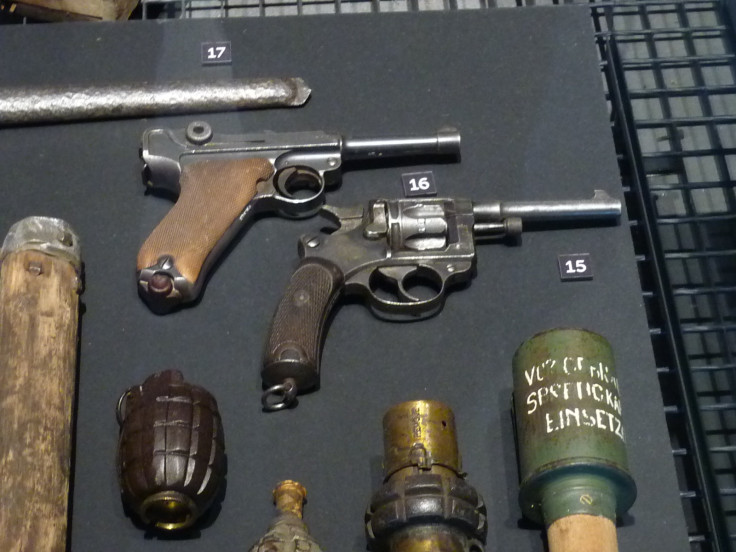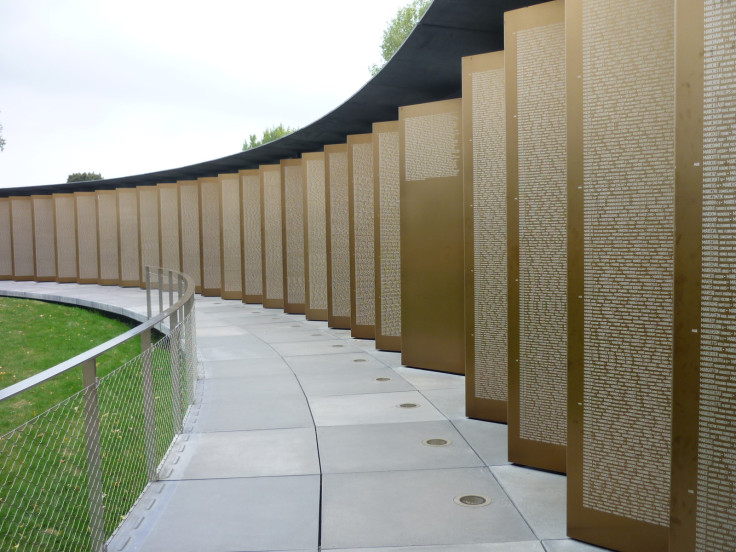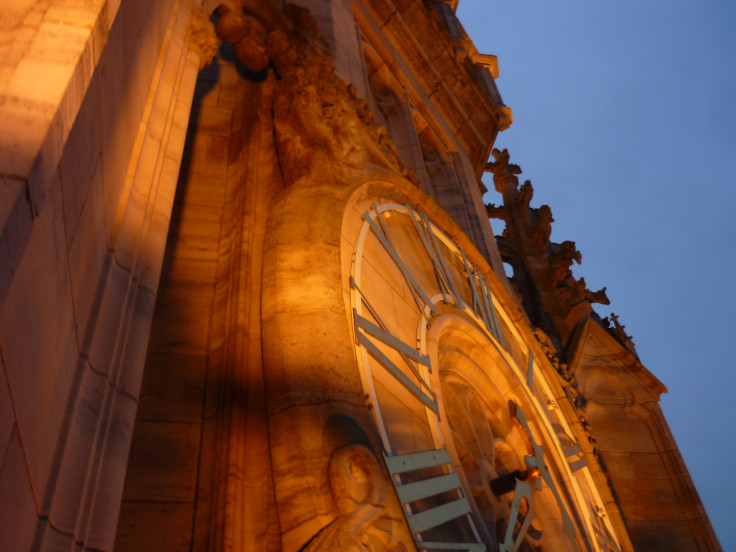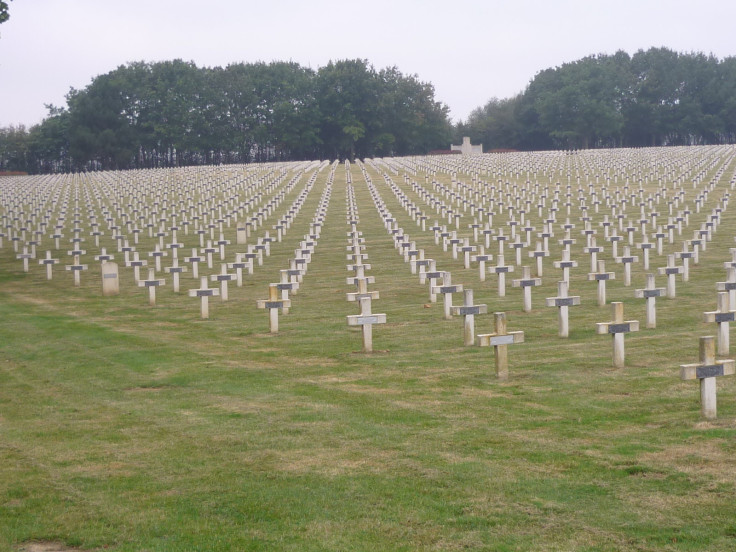Battle of Arras 100th anniversary: Memorials that bring to life the tragedies of WWI
The Battle of Arras took place 100 years ago, a conflict which was pivotal to the outcome of the First World War – at a terrible cost.
There's an awful irony to the story of the Lens 14-18 – Great War Museum, opened in 2014 to commemorate the 100th anniversary of the start of WWI near Arras. The new building, which sits in the village of Souchez in Nord Pas-des-Calais, obviously needed foundations and when the workmen dug up the ground they uncovered seven bodies of soldiers who died in the war. Just two of them could be identified by their tags – the other five remain anonymous, possibly because their deaths came earlier in the war – initially men wore name tags made of leather, which simply disintegrated in the Flanders mud. The two who were finally identified were moved to a resting place with their name on their gravestone.
The Lens 14-18 museum is a perfect example of France raising its game and spending a lot of money on commemorating the battles and the fallen of World War I. The new museum Lens 14-18 - War and Peace History Centre (102 rue Pasteur, 62153 Souchez, www.lens14-18.com), has hundreds of extraordinary photographs, none of which have been seen in the UK before. All of the pictures in the Imperial War Museums in the UK are largely from the British point of view. The ones in the museum are fantastic and very unusual; one shows German troops in nearby Lens wearing looted clothes and carrying stolen beer, another shows the people effectively turned into slaves by the German Army and being marched towards a factory. Perhaps the most amazing, is an aerial shot of no man's land, which looks like a desert – a yellow wasteland with just a 'crack' down the middle, which is a trench. It's abstract and, in a terrible way, strangely beautiful.

The museum also has an amazing collection of uniforms, kit, rifles, pistols and machine guns, including the German machine which made the Allies realise that their blue tunics and swords weren't going to be much use in this most terrible of all wars. Unusually for France, the museum is free.
A five-minute walk up the hill behind the museum brings you to The Ring of Remembrance in Notre Dame de Lorette near the town of Lens. It is a giant copper circle with the names of the 580,000 fallen just in Nord and Pas-des-Calais engraved in alphabetical order regardless of nationality. Sure enough, amongst the hundreds of Martins – most of the French soldiers – there in the middle I find myself staring at 'Michael Martin' engraved in the copper. It could easily have been me.

War memorials are always moving, but this one is particularly beautiful in its simplicity. Amazingly, 40 nationalities are represented and amongst the names are Francois Faber, winner of the Tour de France in 1909, John Kipling, son of Rudyard, and even, bizarrely, Indian Chief Joseph Standing Buffalo.

The region is bracing itself for the thousands of Canadians who will hopefully make the trip to Northern France in April 2017 to remember the battle of Vimy Ridge, which began on 9 April 1917. The Germans held Vimy Ridge for three years, its lofty position perfect for their artillery to fire at the crucial town of Arras, which they did horribly effectively, flattening virtually every single house, church, school and building in the city. Canada sacrificed 11,285 soldiers who took the ridge, and they are remembered with arguably the most moving memorial; two huge towers that rise into the sky topped with two female angels with their heads bowed in remembrance. It is truly humbling.
Arras itself is also having a 100-year remembrance, which will see many Antipodeans visit – and even more Brits. Arras famously used Australian and especially Kiwi miners to dig tunnels from the bombarded town under the ground to just in front of the German lines so they could launch a surprise counter-offensive, which they did on April 5 1917, the Battle of Arras. It was a brilliant strategy but came at a cost, as did all battles in WWI. Perhaps the most famous casualty from a British perspective was the brilliant, under-rated poet Edward Thomas. He arrived in Arras after months of intensive training back in Epping Forest in Essex, and was killed on the first day of the battle by a German shell exploding next to him. Bizarrely it didn't leave a mark on his body – his lungs simply imploded. He is buried in a churchyard to the south.

Perhaps the best vantage point from which to ascertain the various battles comes after a climb to the top of the bell tower in the main square of Arras, which gives a great view of the bowl it sits in – from here you can see Vimy Ridge and the sites of the conflicts. It's worth reminding yourself that the Flemish-style architecture you see before you dates not from the 1600s but from the 1930s. All the buildings were flattened by German shells, but the decision was taken to rebuild the town in its original style. It costs €3.50 to climb the tower.
You can also head down, not just to ground level but further down, to see the start of the tunnels the Allies created. It's strange to look at the tunnel maps, with the New Zealanders christening their tunnels Christchurch, Auckland, Dunedin etc, in almost exactly the spots they would be on a real map of New Zealand. A guided tour is €5.
On the drive back to Calais – one of the ultimate ironies of the war comes into view, a town which for four terrible years sat at the focal point of no man's land – called La Targette even before the war started. It's worth stopping off here to look at the cemetery as, among the thousands of allies buried here, sits the grave of Henri Gaudier-Brzeska, a brilliant Vorticist. The artist's talent was cut short in his prime in 1915, leaving a wonderful but small collection of work behind and the feeling that, like so many other poets, writers and artists, that there was a lot more to come, which we will never see.

ARRAS: HOW TO GET THERE
DFDS operates up to 54 sailings in a day between Dover and France on its Dover-Dunkirk and Dover-Calais routes. (www.dfds.co.uk)
http://blog.cwgc.org/arras
This being France there are plenty of excellent places to stay, eat and drink. For Lens, and a bit of old-school luxury and charm try Chateau de Tilques (www.tilques.najeti.fr, 12 Rue du Chateau, 62500 Tilques), which has an excellent restaurant.
For Arras town centre try Hotel Univers (3-5 Place de la Croix Rouge, 62000 Arras, www.univers.najeti.fr). For quality French cuisine in Arras try L'Ambassade d'Arras (18 Grand Place, www.lambassadedarras.fr).
© Copyright IBTimes 2025. All rights reserved.






















